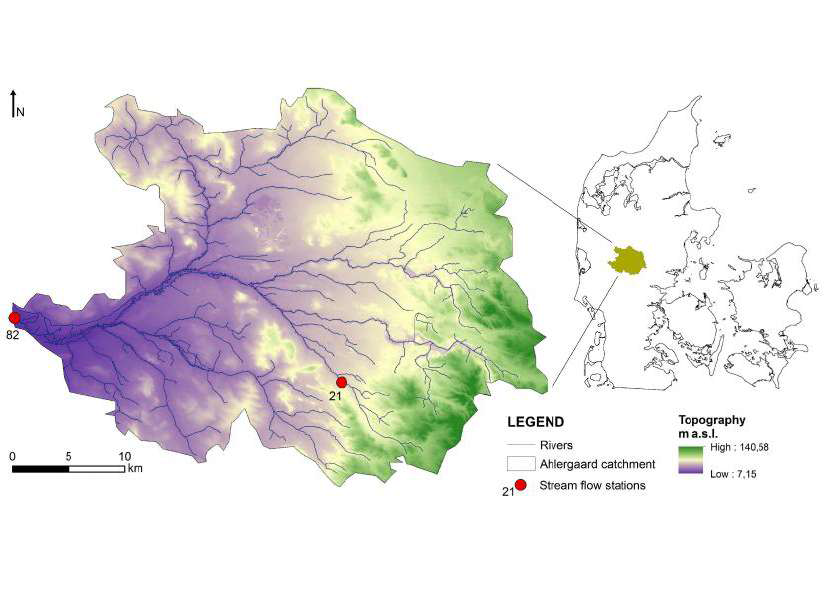Universitetsavisen
Nørregade 10
1165 København K
Tlf: 21 17 95 65 (man-fre kl. 9-15)
E-mail: uni-avis@adm.ku.dk
PhD thesis defense
PhD thesis defense — Diana Lucatero defence at IGN
Date & Time:
Place:
Auditorium C, Department of Geosciences and Natural Resource Management, Øster Voldgade 10, 1350 København K
Hosted by:
Geology Section
Cost:
Free
Diana Lucatero defends her thesis,
Ensemble Hydrometeorological Forecasting in Denmark
Supervisors:
Professor Karsten Høgh Jensen, IGN
Affiliated Professor Henrik madsen, IGN
Research Professor Jens Christian Refsgaard, GEUS
Assessment Committee:
Senior Researcher Maria Helena Domingues Ramos, IRSTEA – France
Project Scientist Andrew W. Wood, NCAR, Boulder – USA
Professor Peter K. Engesgaard (chair), IGN
Summary:
Hydrometeorological extremes such as floods cause economical losses that could be dampened if sufficient time is given to respond to potential threats. This is why efforts in hydrology to include information from Numerical Weather Predictors (NWP) or General Circulation Models (GCM) have been made. The present thesis expects to advance the field of ensemble hydrometeorological forecasting by evaluating the added value of NWP and GCM ensemble prediction systems (EPS) for hydrological purposes. Main findings of our research are summarized below:
(i) The use of NWP EPS that differ in both spatial and temporal resolution to generate discharge forecasts at the local scale, revealed that precipitation forecasts with higher spatial resolution have a lower accuracy than that of the coarser spatial resolution. However, discharge forecasts seem to dampen these differences due to compensational errors.
(ii) Although the possibility of skillful seasonal forecasting has been documented for large domains and accumulated totals closer to the tropics, the evaluation of monthly aggregated precipitation (P), temperature (T) and reference evapotranspiration (ET0) in Denmark revealed that forecasts exhibit biases irrespectively of lead time. These biases affect accuracy at longer lead times and lead to the general poor skill at lead times two to seven months. The highest skill is then found for a lead time of one month, with T forecasts improving on climatology 40% in terms of accuracy, P and ET0 forecasts only about 15%. Attempts to reduce the bias, revealed that if the final goal is to remove the systematic bias, the methods used work equally well. Despite the reduction of bias, methods are only able to reduce the number of grid points with negative skill to convert them to grid points with accuracy similar to climatology.
(iii) GCM-based streamflow forecasts exhibit biases that increase with lead time. These biases lead to lower accuracy relative to streamflow forecasts generated with climatology, especially at lead times larger than two months. The greater benefit comes from postprocessing streamflow forecasts, either alone or in combination with preprocessing of GCM forcings.
The thesis is available for inspection at the PhD administration office 04.1.413
